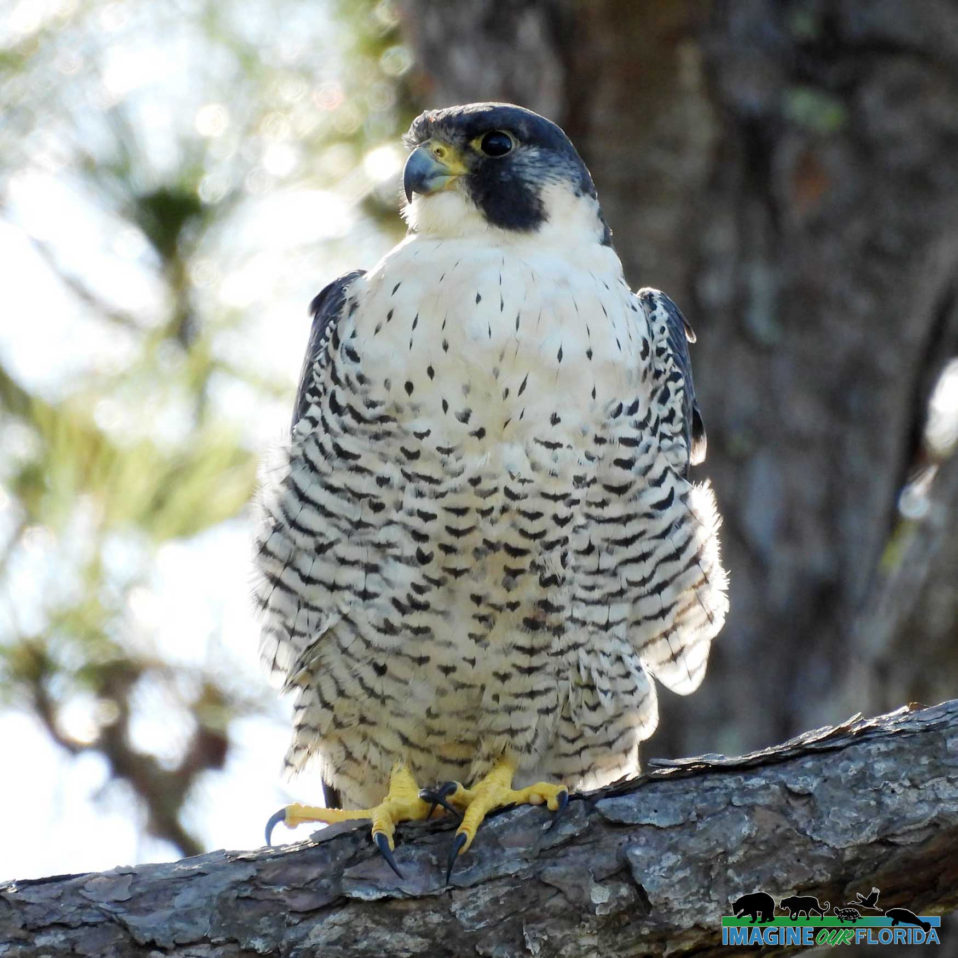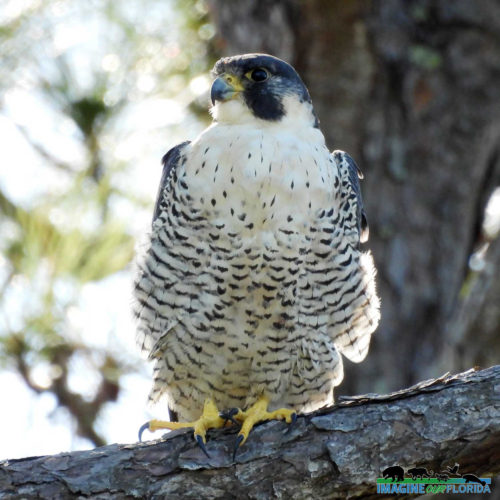The Peregrine Falcon, Falco peregrinus, is one of the fastest birds in the world and may reach speeds up to 238 miles per hour when swooping down on prey. From hummingbirds to Sandhill cranes, birds are the major source of food for the Peregrine Falcon. Bats, other small mammals, and insects add variety to their diets. The falcon will perch high in a tree or soar high in the sky while looking for food. From 300-3000 feet, the falcon will begin its stoop, dive upon the bird, and in a blink of an eye, stun it by hitting it hard or grabbing the prey with its feet. The power behind the speed of the falcon’s flight allows it to strike a bird in the air and cause it to fall to the ground. A quick bite through the neck kills the bird. Rock pigeons are easy prey near cities while shorebirds and ducks are a favorite meal along Florida’s coasts.
Between 1950 and 1970, DDT poisoning caused the Peregrine Falcon to be declared an Endangered Species. The North American Breeding Bird Survey now considers the population to be stabilized.
Although Peregrine Falcons can be found on 6 continents, they are still an uncommon sight and in Florida can be seen on rare occasions during winter.
Fun Fact: Peregrine means wanderer. Northern breeders migrate from the Arctic tundra all the way to South America.



Recent Comments